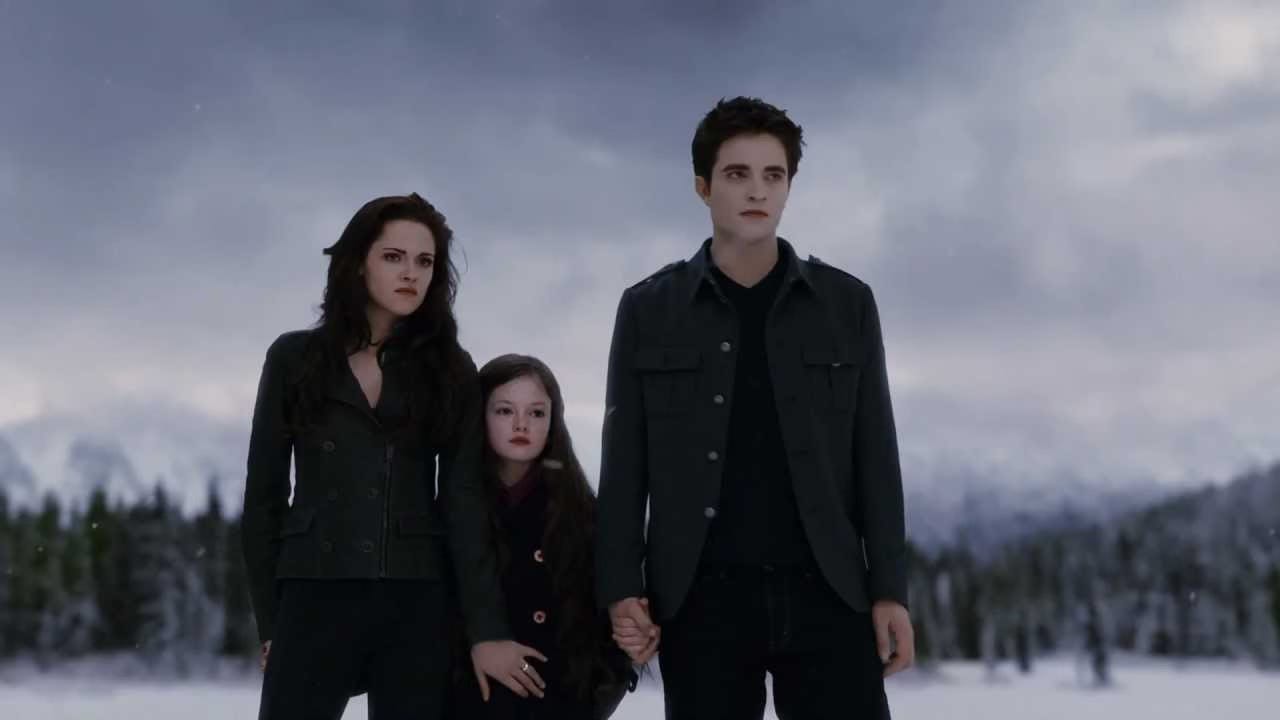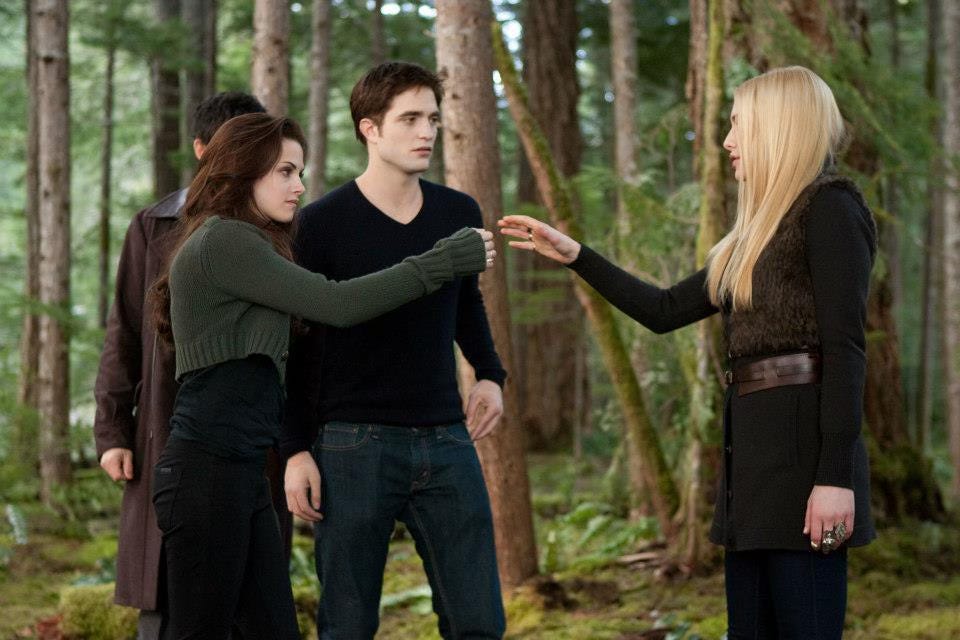Twilight Saga: Breaking Dawn Part 2
Well here we are! After much effort and a few delays, we’ve finally arrived at the breakdown for the fifth and final movie of the Twilight Saga. I hope you've enjoyed and gained inside into the first four movies, and hope you'll find the same in this final breakdown. Big thanks go to Rachel Elizabeth and Erin Mitchell who did the breakdowns for the first Twilight and Twilight New Moon. It was actually the popularity of their breakdowns that led me to go ahead and break down the remaining three movies.
As always, these breakdowns contain SPOILERS, and are only recommended if you've already seen the movie. You can check my introduction to these breakdowns, to get an overview of my process and philosophy.
Feel free to let me know what you think in the comments below!
The Basics
Director: Bill Condon
Writers: Melissa Rosenberg, Stephanie Meyer
Release Date: 2012
Runtime: 115 Minutes
IMDB: https://www.imdb.com/title/tt1673434/
Movie Level Goals
Protagonist: Bella
External: Survive the threat of the Volturi
SUCCESS | FAILURE | MIXED
Internal: Develop her vampire powers to shield (take care of Edward)
SUCCESS | FAILURE | MIXED
Goal Relationship—Internal leads to External: Bella must develop her shielding skills in order to survive the threat of the Volturi
Three Observations
Observation #1: No Inciting Incident
Twilight Breaking Dawn Part 2 might be one of the only arch-plots I've seen with no inciting incident. At the end of Breaking Dawn Part One, the final shot is of Bella opening her eyes, awake and alive as a vampire. When Breaking Dawn Part 2 begins, we basically start in the same place as at the end of Part One. In essence, her waking up as a vampire is the inciting incident for the final installment. Obviously, if she had not survived and become a vampire, we wouldn't have a final movie. Instead, however, Bella does survive and she immediately has an act one goal of adjusting to being a vampire and all of the advantages, challenges, and conflicts that go with that. By having the inciting incident occur at the end of the previous movie or immediately at the beginning of this one, Breaking Dawn Part 2 is freed to spend the entire first act dealing with Bella's goal of adjusting to being a vampire. This is important, because there is a lot for her to do to make this adjustment. These include: meeting her child for the first time, discovering that Jacob has imprinted on Renesmee, having sex with Edward as an equal, dealing with Charlie, and embracing her powers as a vampire. Though a big part of the reasoning for including the inciting incident at the end of the previous movie is based on the fact that the filmmakers chose to split the final book into two movies, the choice is also a smart one from a dramatic point of view. By not having to wait to establish an inciting incident, act one is free to immediately dive into Bella's goal of adjusting to life as a vampire, and is able to spend all of the 30 minutes of the act dealing with the various subplots involved with this goal (especially the subplot in involving Charlie, since after act one we never see him again).
Observation #2: The Scope of Act 2
Throughout the Twilight series, we are incredibly aligned with Bella. We rarely have scenes that don't involve her, unless we are getting a glimpse at the actions of her antagonists. However, the second act of Part Two broadens the scope of the story. While Bella is still involved in most of the scenes, the act two goals necessitate inclusion and development of a lot more characters. We really see two primary goals unfold over the course of act two. The first one is for Bella and the Cullens to find and gather witnesses to testify that Renesmee is not an "Immortal Child" and a threat to the order of vampires. The second one is for Bella to develop her vampire powers as a shield. While the second goal is obviously very focused on Bella, the first one is much more expansive. Bella is certainly involved in this goal, for example when she, Edward, and Renesmee travel to Alaska to recruit the Denali cousins. However, we also have a number of scenes that don't involve Bella, including when Carlisle and Esme travel to Egypt and when we meet some of the other witnesses, like Garrett. This broadening of scope is definitely in line with the shift of the plot in this final movie. Even as they deal with external threats, the goals and structure of the first four movies have revolved primarily around the romance of Bella and Edward. By Part Two, however the romance has been fully developed and the primary focus is on the external threat of the Volturi.
Observation #3: The Act 3 Denouement
This leads to our third observation, which is the extended denouement of act three. One of the distinguishing features of the Twilight series has been extended scenes or sequences which don't directly involve act or even movie level goals. Throughout the movies, especially in their endings, we've seen the movies shift away from plot in order to spend time with, and revel in, the romance of Bella and Edward. For example, at the end of the original Twilight we have nearly a full sequence that just focuses on Bella and Edward attending the senior prom. Likewise, at the end of the third movie, after the main plot has wrapped up, we have an extended denouement where Bella reaffirms her desire to be a vampire. The extended denouement in act three of Part Two is probably the shortest but most important of any of them. Technically, it only runs about six minutes. However I think it's worth noting the additional three minutes given to the extended credits that recognize all of the important characters going all the way back to the first movie. Add them together, and this final nine minutes is vital to wrapping up the entire series. So much of part two has focused primarily on the threat of the Volturi and the external plotline. This final denouement allows us to return to the heart and soul of the Twilight series, which is the romance between Bella and Edward. Bella reaffirms her undying love for Edward, and the fact that they will be together forever. This is a clever and wonderful ending, because it takes the teenage idea that a high school romance can last forever and makes it literal by having our two characters be immortal (the perfect wish fulfillment for the primarily young audience of the series). The review of all of the primary characters in the credits, reinforces the epic nature of their romance, by highlighting all of the people involved, and making it seem like this has been an epic, long story, despite the fact that it really only unfolds over a couple of years.
Mini-Observation #4: Three Acts
One last note worth mentioning is that Breaking Dawn Part 2 is the only one of the five movies that has three acts rather than four. The obvious reason for this goes back to some of the major points made in the breakdown of Part One, which is that we have one book that has been split into two movies. We already noted in the breakdown for Part One, that there was some padding in order to flesh out an entire movie. Clearly, there simply wasn't enough content and plot to have a fourth act in the final movie.
Conclusion
So we finally made it through all five movies of the Twilight saga! Along with my colleagues Rachel Elisabeth and Erin Mitchell, it's been a lot of fun really digging into this entire series. At first glance, it might be easy to be dismissive of the Twilight series, and feel like there's not much to learn from them. However, I think that would do a great disservice to the variety of structural and narrative choices made by the filmmakers throughout the series. From the extended denouements found in many of the movies, to the focus on rites of passage, to the choice of starting the final movie without an inciting incident, to the revolutionary idea in a Hollywood movie that a female protagonist could love and choose between two romantic interests, the Twilight series constantly challenges the norms and narrative assumptions of Hollywood movies.








